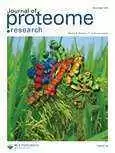A team of researchers recently to examine the design of new high affinity peptide ligands for HLA-DQ2 using a positional scanning peptide library.
The research team included U. Jüse, Y. van de Wal, F. Koning, L. M. Sollid, B. Fleckenstein with the Centre for Immune Regulation, Institute of Immunology, Oslo University Hospital-Rikshospitalet, Oslo, Norway.
Celiac.com Sponsor (A12):
HLA-DQ2 (DQA1*0501/DQB1*0201) is associated with several immune disorders including celiac disease, which results from an inappropriate T-cell response to gluten.
Researchers hope that interference with peptide presentation by HLA-DQ2, perhaps through the use of of peptide blockers, might lead to new treatment strategy for such HLA associated disorders. For such strategies to work, it will be necessary to identify ligands that bind much better to HLA-DQ2 than the disease related epitopes.
The team used a positional scanning nonapeptide library to determine the optimal amino acids for each position of the HLA-DQ2 binding frame. By combining the optimal residues in each position, the team was able to design high affinity binders to HLA-DQ2.
Interestingly, the decapeptide with highest affinity was composed of the most favorable residues in each position. This sequence bound 50-fold better than the immunodominant gluten epitope DQ2-alpha-I-gliadin what makes it an interesting lead compound for the development of blockers.
The correlation between measured and predicted affinities was poorer for some natural HLA-DQ2 ligands, but notably these peptides did not have optimal amino acids at all positions.
The team's method offers a straightforward approach for developing high affinity binders to HLA class II molecules.
Source: Open Original Shared Link






Recommended Comments
There are no comments to display.